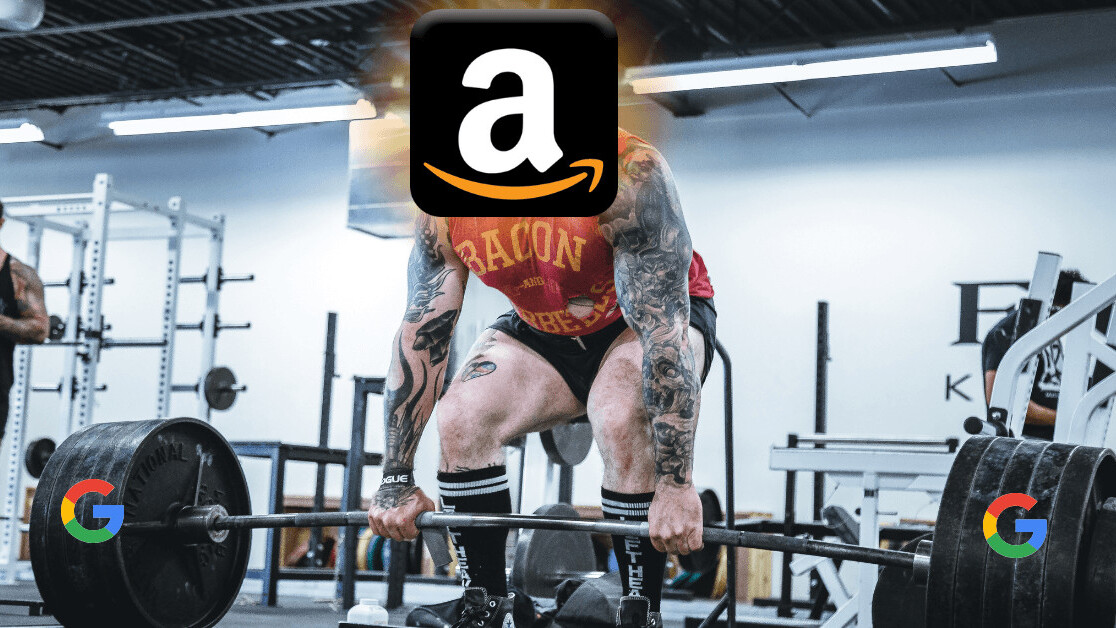
It’s over. Amazon won.
For now, the massive online retail giant stands atop every other ecommerce platform, leaving everyone else to fight over the scraps left in its shadow.
If you’re doing ecommerce, you’re probably selling on Amazon (or you’re in one of the few niches that hasn’t been absorbed into its market-distorting gravitational field).
Amazon is the biggest ecommerce platform out there, and if you’re not using it, you’re missing out. But there’s more to Amazon than just trying to own the buy box and rank well on their A9 search engine.
Sure, there are developments coming in the future with buying via Alexa (though that’s not yet where Amazon had hoped). The best thing you can do for your sales listings isn’t even related to Amazon at all.
It’s ranking on Google.
Google is the largest search engine in the world, and it involves an entirely different set of criteria to Amazon’s internal search engine. Rank well on both and you can double up on the benefits.
Rank badly on either and you’re cutting yourself out of a potentially massive revenue stream. Fortunately, there are some tricks you can use to get your Amazon listing to rank quickly on Google and drive sales.
Create a link on another indexed website
The best way to get GoogleBot to pay attention to your product page is to add a link on another website that’s already indexed on Google.
If you have your own website, find a place where you can incorporate a link to the Amazon listing of your product. If not, find a website where you can build a link into a post.
Make sure you’re not duplicate listing, as that will do the opposite of what you’re trying to do. In addition, make sure you’re not using an affiliate link, which won’t work the same way. It has to be a clean Amazon link.
This method is especially good if you have high domain authority on whatever site you’re using for the listing. The higher the domain authority, the more likely the product gets picked up by GoogleBot.
Incorporate long-tail keywords
Voice search is the next wave that marketers are looking to catch, and the biggest change that’s coming is the importance of long-tail keywords.
When you’re writing or editing your product copy, do some research on long-tail keywords related to the product that you’re posting. Amazon may not pick up on them, but Google will, and with natural-language queries only becoming more popular, you’ll be in a better position to rank for the niche terms that will point people to your product.
Google confirmed recently that they rank for intent — for example, ranking ecommerce links higher than informational links when a statement of intent like “buy” is included in the search.
When you’re hunting for long-tail keywords, be mindful of that and try to find keywords that include some statement of intent that you can work into the copy.
Look what happens when you search for “apple macbook pro”:

And what comes up when you search for “buy apple macbook pro”:

There’s a clear difference between the two.
Optimize for Amazon — only focus on Google after that
The conversion rate of a product on Amazon is a big ingredient in how it ranks on Amazon.
What that means, practically speaking, is that it doesn’t matter how much traffic you’re driving to the listing if people aren’t buying.
If people are going to the page and not buying, you might be worse off than someone who’s not getting much traffic but converting at a high rate. And if you’re ranking well on Google but not getting an audience that converts, you’re killing your Amazon rankings.
To make sure you’re getting the most out of your listing, spend most of your time making sure it’s set up well for conversion with rich, interesting, informative content.
Get as many high-quality product images as you can. Put up as much information as you have available. Give it a punchy product description that has terms that rank well on Amazon’s internal search so people can find it.
Then, and only then, should you think about Google.
Because if you come at it backwards, all you’re going to do is shoot yourself in the foot.
Keep your information concise
You can’t really determine much about how your page displays in Google, because Amazon autogenerates titles and meta descriptions for all its listings. You can, however, keep the title short enough to ensure it completely displays.
Google wants title descriptions to optimally be around 70 characters or less for desktop search, and up to 78 characters on mobile.
If you’re incorporating a lot of detail in your product title, the page title could be significantly bigger than you expect. Look at how these titles display when I search for Macbook Pro laptops:

Amazon’s autogenerated titles include both the product title and the product category. We can’t see the full title from the Google listing because it’s truncated, but we can see it if we go to the source code for the page.

This product won’t display completely on Google because of how long the title is.
That may not be a bad thing — if you’re trying to work some keywords into the title for your Amazon SEO, it may be worth it — but you should count the cost first and figure out what’s most important.
Use the power of bundles
There’s a little secret to Amazon that you can use to dominate on both Google and Amazon: bundles.
Bundles are a time-honored Amazon technique. Creating a package with more than one item lets you create a completely separate listing, side-stepping a frequent problem with Amazon where a product is oversaturated with listings.
In addition, when people search by UPC, your bundle is unique — and you can take advantage of a unique item name, too. On either Google or Amazon, it will bring up your own bundle, not the hundred duplicate listings for each product.
There’s more that goes into bundles than just throwing two or more products together and calling it a day, but that’s beyond the scope of this article. If you’re interested in learning more, there are plenty of resources that can guide you in taking advantage of this strategy.
With these five tricks, you’ll be able to use Google and Amazon together to drive traffic to your products and create more sales. So what are you waiting for?
Apply these tips now and you’ll be well on your way to greater ecommerce success.
Get the TNW newsletter
Get the most important tech news in your inbox each week.




